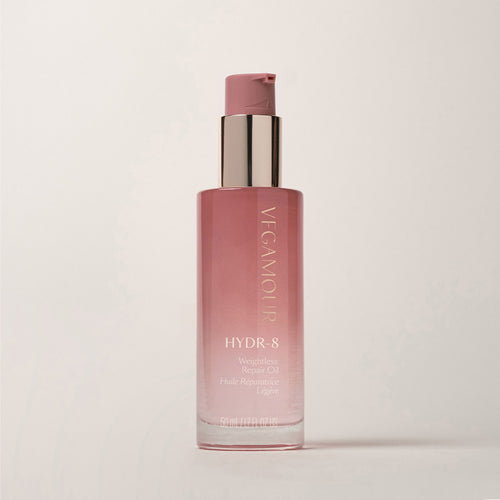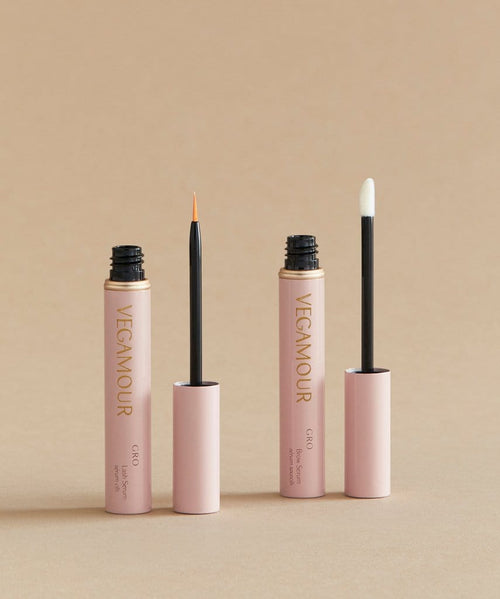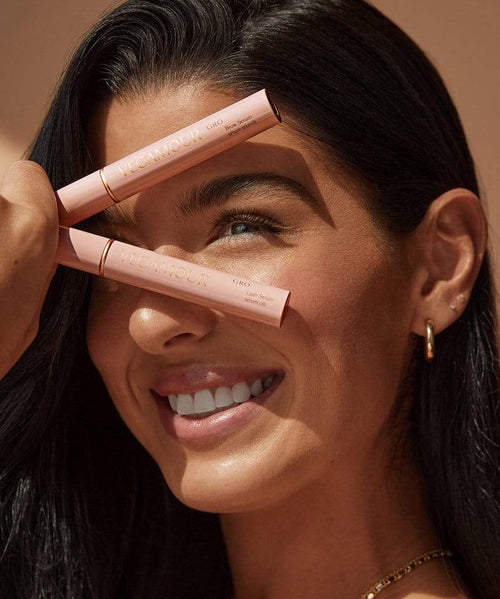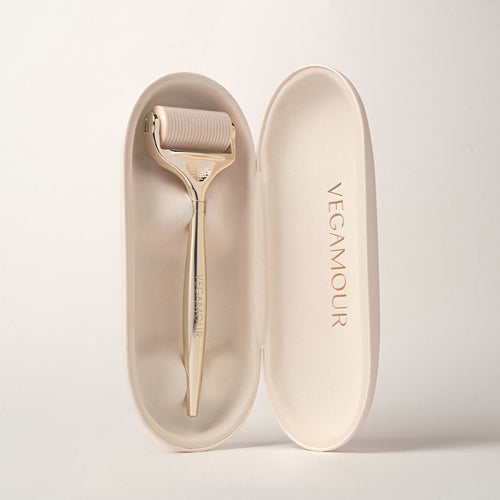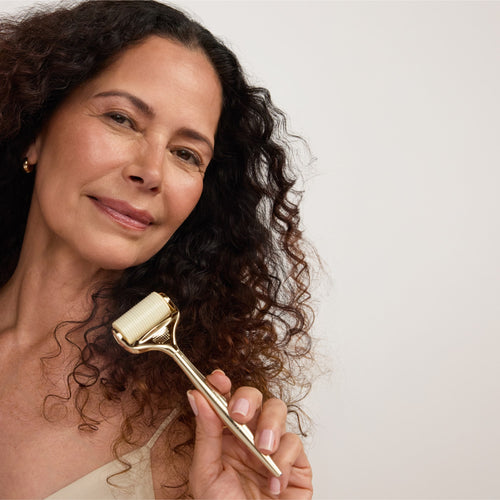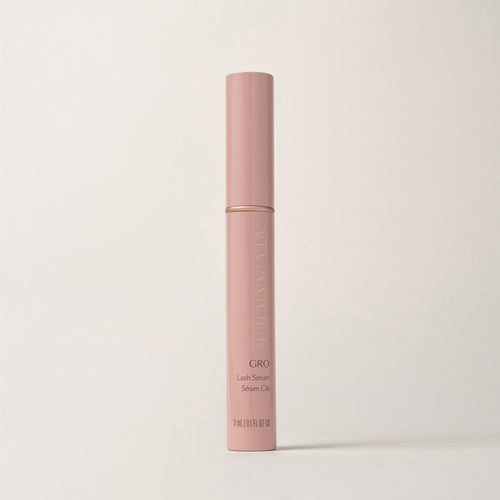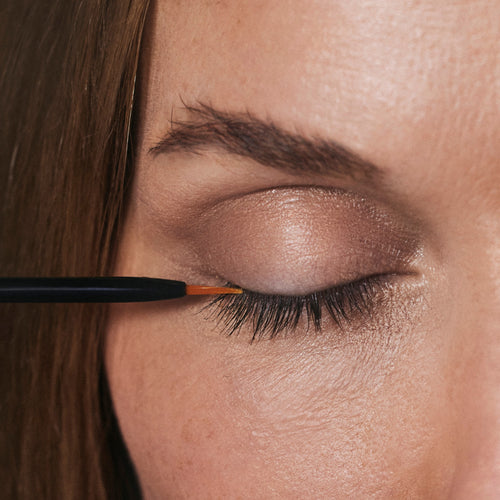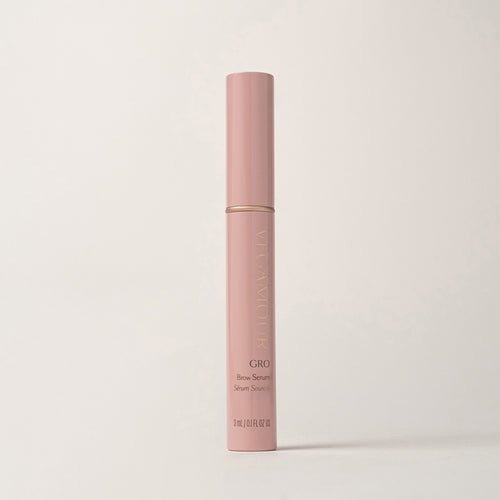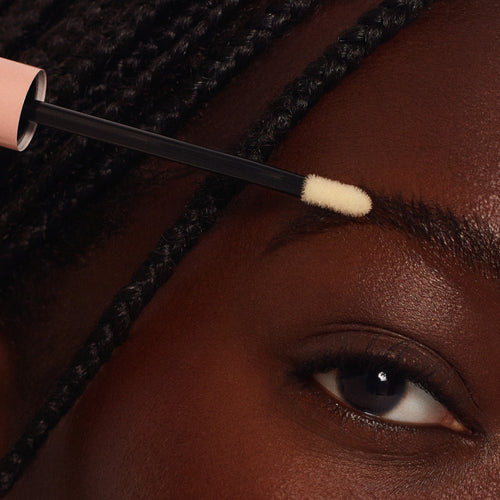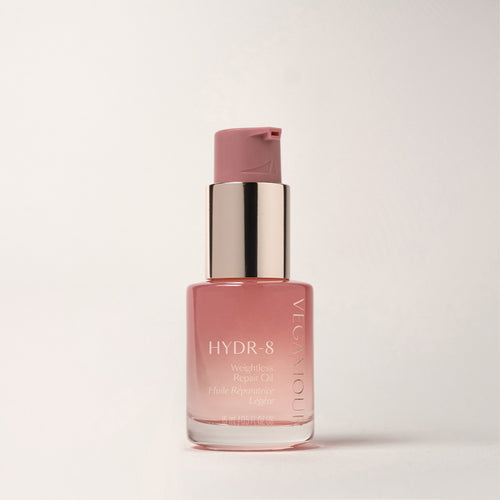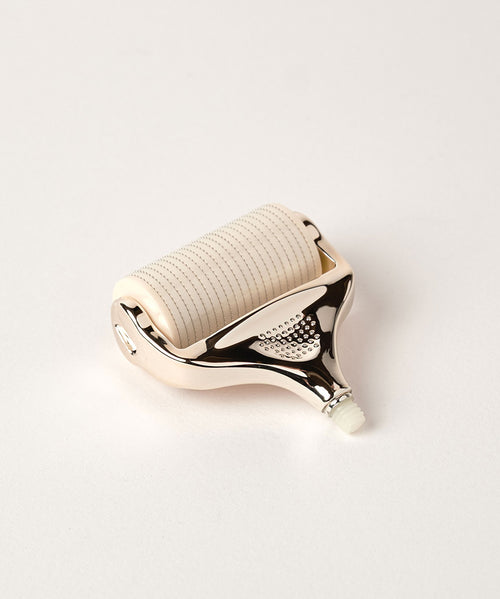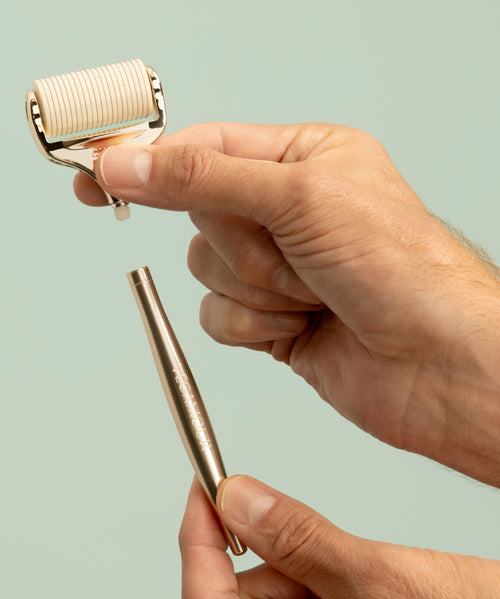Going gray has never been more gorgeous! And for some, a major silver lining of the pandemic has been the rise of the "grombre" (gray + ombre) — which happens when dyed gray hair gradually grows out.
We all know that gray is associated with aging, but why do some folks see significant gray before they hit 30 while others won’t notice even a single white strand until much later? And what’s happening to the hair when it turns gray? Read on to uncover the full story, along with what products you can use to preserve your hair's natural color.
The Root of the Matter: Hair Follicles
The root cause of gray hair starts with your hair follicles, the mini-organs that live beneath the skin’s surface.
Each hair follicle looks kind of like a sac, and the hair bulb is at the very bottom of the sac, where much of the action of hair production takes place. The hair shaft is constructed cell by cell in the bulb, growing and moving upward to eventually emerge from the skin.
As the hair shafts are being built cell by cell, another class of cells is busy making the pigments that will color your hair shafts. These pigment-producing cells, called melanocytes, make two kinds of hair pigment (or melanin) — eumelanin for dark shades and pheomelanin for light and red shades. Melanin is also the same chemical that shades your skin.
“When the melanocytes in the scalp associated with hair follicles stop producing melanin, our hair turns gray,” explained Dr. Kemunto Mokaya (aka Dr. Kemmy), a board-certified dermatologist based in Texas.
Over time, hair follicles naturally age or they are prematurely worn down by other stressors and lose their ability to produce melanin.
Shop: GRO AGELESS Collection for Graying Hair
What Causes Gray Hair?
Ultimately, gray hair results from hair follicles' loss of ability to produce the melanin needed to color hair shafts. And while age is the biggest driver of graying hair, there are also several other factors that might impact how and when you go gray.
Aging and Genetics
Over time, due to natural aging, follicles get worn out. “Basically, the pigment cells in the hair follicle start to break down after about 10 growth cycles, typically around the age of 40,” said Dr. Lisa Rhodes, board-certified dermatologist at Westlake Dermatology in Austin, Texas.
And while genetics are commonly acknowledged as playing a role in hair graying, we don’t have a detailed understanding as to how this relationship works.
Stress
It’s a commonly held belief that stress makes us go gray, but historically there hasn’t been a lot of evidence to explain how or why. However, recent discoveries have begun to explain how stress contributes to gray.
One way is through oxidative damage to the follicle. Dr. Erum Ilyas, board-certified dermatologist and founder of AmberNoon, explained that psychological stress can induce oxidative damage to the pigment-producing melanocytes in our follicles, which eventually leads to their death and the onset of graying. Oxidative stress directly impacts our follicles and is involved in typical age-related graying, too.
Get Zen: Everything You Should Know About Stress & Hair Loss
Smoking
Cigarette smoking has been associated with oxidative stress in the follicles and the aging of hair, and it also may contribute to premature graying. However, more research is needed to link smoking to the onset of gray hair.
Medical Conditions
Some medical conditions could contribute to hair graying, too.
Vitiligo is an autoimmune condition that affects the skin’s ability to produce pigment. Folks with vitiligo will develop patches of skin that lose their pigment and turn white. Aside from these visible changes in the skin, vitiligo isn’t painful or contagious. The condition has, however, been associated with premature graying.
Alopecia areata (AA) is another autoimmune condition that causes hair loss to occur in round coin-sized patches. It’s common for people who’ve had AA to experience a loss of pigment when hair regrows, which may or may not be permanent.
Thyroid hormones directly impact the functioning of follicles, and it’s been suggested that decreased thyroid hormones, or hypothyroidism, could cause premature graying. However, the connection is not well understood, and more research is needed.
Popular Product Alert: GRO AGELESS Daily Duo
Vitamin Deficiencies
Vitamins, minerals and other nutrients are very important to the normal functioning of hair follicles and overall hair health. Several vitamin and mineral deficiencies have been linked to hair graying, including:
- Vitamin B-12
- Iron
- Copper
- Calcium
- Selenium
- Zinc
- Vitamin D3
When Does Graying Start?
Graying is a totally natural process that unfolds differently for everyone. Some people might notice graying hair in their 30s, while others might not see gray hair until they hit their 50s. On average, though, one global study showed that 74% of adults, ages 45 to 65, had graying hair.
Holistic Hair Care For Graceful Graying
Graying is a natural part of hair aging that cannot be entirely avoided, but some external factors can impact how and when graying begins. Here are a few tips for supporting follicles throughout the ages.
Diet
Hair follicles, being the hair shaft factories that they are, need several different vitamins, minerals and nutrients to function at their best. In addition, there are a handful we know can impact hair graying. A well-balanced diet is a must for hair (and overall!) health.
If gray hairs concern you, VEGAMOUR’s brand-new GRO AGELESS Gray Delay™ Hair Supplement support your natural color and hair health from the inside out. They have been carefully formulated to offer a powerful blend of B vitamins, antioxidants, selenium, calcium, copper along with Fo-Ti and our proprietary ingredient Kerenat™ to support healthy hair growth.
If you plan on embracing the gray and just want to support overall hair health, our GRO+ Advanced Gummies are the first hair vitamin that harnesses the therapeutic power of broad-spectrum hemp, featuring biotin, folic acid, zinc and other hair-friendly vitamins and minerals.
TLC For Your Follicles
“Apart from paying attention to what you eat, it's also important to pay attention to what products you use on your head,” said Michael Garrico, certified personal trainer and nutritionist with TotalShape. “Use natural products and avoid chemicals, parabens and sulfates,” he added.
Lucky for you, VEGAMOUR is an all-natural and vegan hair wellness brand that never uses parabens or sulfates. Our revolutionary new GRO AGELESS Anti-Gray Hair Serum has been shown to increase melanocytes — the cells that produce pigment for hair — by up to 280% after 12 weeks of treatment while also boosting melanin (the pigment in hair) by up to 127%!
Another way to care for follicles? Think about other external stressors that might cause oxidative stress and premature aging. Dr. Kemmy recommends protecting your scalp from ultraviolet (UV) radiation, cigarette smoke and pollution whenever possible.
Destress on the Regular
“Stress can be a reversible factor in graying hair,” said Dr. Anthony Kaveh, medical doctor and public speaker. “While genetics and other factors can also play a role, stress is a unique risk factor in that its reduction can also benefit heart and brain health,” he added.
In other words, decreasing stress levels has many benefits, not just for your follicles but for your whole body and mental well-being.
#include-related-slider#
The Takeaway
Graying is most often caused by the natural aging of your follicles, but it can also be impacted by other factors like psychological stress, diet, smoking and certain health problems. Taking a holistic approach to your health — plus using products that can delay and combat graying hair — can help your follicles function at their best while also supporting your whole body and mind.
More From VEGAMOUR
- How to Disguise Gray Hair With Highlights
- Get to Know Vegamour's Gray Hair Products
- Why Is My Hair So Dry?
Photo credit: cottonbro/Pexels
Back





